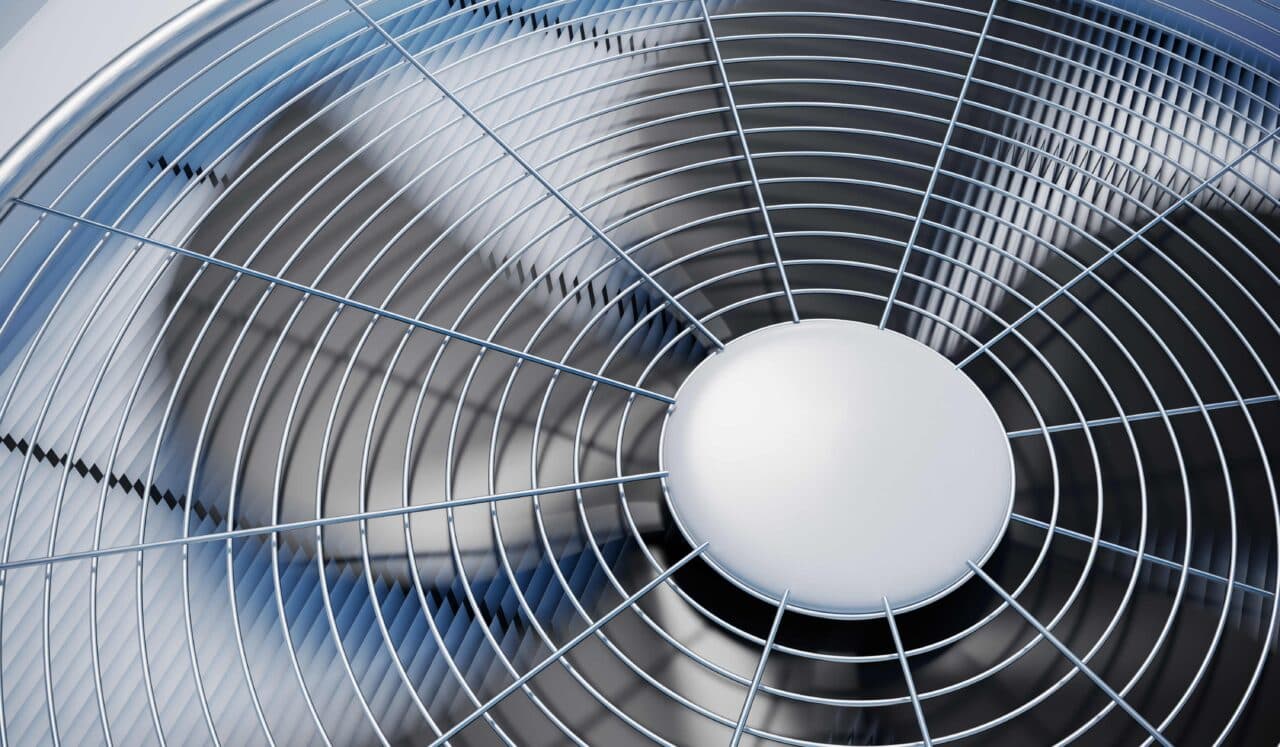Ah, the sweet relief of walking into a cool home after a sweltering summer day! But have you ever wondered what magic makes that possible? It’s in large part thanks to a little something called refrigerant.
Refrigerant is a chemical compound used in air conditioners to cool air and absorb heat from inside your home. But when your AC system doesn’t have the right amount of refrigerant charge, it’s like trying to cool down with a fan and a wet cloth — barely effective.
What exactly happens when the refrigerant levels dip? And how can you, as a homeowner, spot the signs before your oasis of cool turns into a desert of discomfort?
Lee Company’s HVAC experts are here to reveal the magical mysteries of refrigerant, its pivotal role, and the consequences of getting it wrong.
Understanding Refrigerant Charge
Ever gazed at your air conditioning system and thought, “What makes you tick?” At the heart of its cooling magic lies the refrigerant charge. Let’s break it down:
Does my AC have refrigerant?
If your air conditioner was installed before 2010, it likely uses R-22 refrigerant, which is being phased out, making recharging for older systems more expensive. These days, only reclaimed R-22 is available. HVAC systems installed after 2010 typically use non-ozone depleting refrigerants like R-410a, ensuring stable re-charging costs and several more years of efficient service.
What is Refrigerant Charge?
Refrigerant charge isn’t some mystical energy but rather the specific amount of HVAC refrigerant present in your air conditioning system.
Why is it Significant?
Imagine trying to drive a car without enough fuel. It might sputter, stall, or not even start. Similarly, the refrigerant charge in air conditioning systems ensures they run smoothly. Too little or too much, and you’re in for a bumpy ride.
The Goldilocks Zone: Ideal Levels for Performance
Just like Goldilocks wanted her porridge “just right,” your air conditioner coolant needs to be at the perfect level. Not too high, not too low, but just right for optimal performance. This balance ensures your system operates efficiently; conserving energy and saving you money.
The Comfort Factor
Proper refrigerant charge is what makes that sweet relief of a cool house possible. It’s responsible for:
- Consistent Cooling: No more hot and cold spots around the house.
- Efficient Operation: Your system doesn’t have to work overtime, leading to reduced wear and tear.
- Lower Energy Bills: Proper levels mean no unnecessary energy wastage. Say goodbye to those high energy bills due to low refrigerant charges.
- Longer System Lifespan: With the right charge, there’s less strain on the AC compressor and other components.
As you can see, refrigerant charge has a lot of responsibilities when it comes to keeping your air conditioner running optimally. And to make sure everything runs as it should, it requires attention.
Too often, homeowners overlook the importance of maintaining the right refrigerant levels, leading to poor refrigerant charge and its associated challenges (which we’ll explore more below).
So, next time you’re lounging in your comfortably cool living room, spare a thought for the refrigerant working hard behind the scenes to make that possible.
5 Signs of Poor Refrigerant Charge
Some homeowners aren’t very handy around the house, and that’s okay! But if that’s you, the complexities of your air conditioner might seem like a big mystery.
Fortunately, you don’t have to be Bob Vila to know when your air conditioner coolant levels are off. There are some tell-tale signs that can alert you to a problem with the refrigerant charge.
Here’s what to look out for:
Insufficient Cooling
Have you ever opened the fridge, expecting a blast of cold air, but were met with a lukewarm breeze and the smell of rotting food? That’s what insufficient cooling from your air conditioner feels like (minus the smell).
It’s one of the most glaring signs of low refrigerant charge in your air conditioning system. So if your home isn’t keeping up with our Southern summer heat, it’s time to take a closer look.
Longer Cooling Cycles
If your AC seems to be running longer than usual, it’s not just being overzealous. Longer cycles often indicate that the system is struggling to reach the desired temperature due to an imbalance in the refrigerant charge.
Ice Buildup
Spotting ice on your AC’s components? While it might seem fitting for a cooling device, ice buildup, especially on evaporator coils, is actually a red flag. It’s often a result of refrigerant leaks in AC systems, leading to reduced efficiency.
Skyrocketing Bills
Inflation has been a bit out of control lately… But if you’ve noticed a severe spike in your energy bills, it might not be just the economy. High energy bills can be a result of poor refrigerant charge, making your system work harder and consume more power.
Decreased Airflow
Feeling less of that refreshing breeze from your vents? Decreased airflow can be a symptom of strain on the AC compressor from poor refrigerant charge.
Now, you might wonder, how do these signs relate to the refrigerant charge? It’s simple. When your HVAC refrigerant levels aren’t optimal, the entire system has to compensate, leading to these noticeable issues.
So, the next time you sense something’s off with your cooling haven, don’t just brush it off. It could be your system’s way of crying out for a refrigerant check. And a little attention and maintenance now can save a lot of discomfort (and money) down the line!
The Hidden Impact of Poor Refrigerant Charge
Picture your air conditioning system as a classic Southern jam session. Each component, like a musician, plays its part, coming together to create that cool, comforting country tune we all love.
But what happens when the lead guitarist (our trusty refrigerant) misses a beat? The whole rhythm gets thrown off.
Here are the consequences of a poor refrigerant charge that might not be immediately evident:
The Out-of-Tune Guitar: Reduced Capacity
Even if your system is still belting out cool air, it’s not hitting all the right notes. It’s like a guitarist with a broken string; they can still play, but not at their best. This reduced capacity means your air conditioning system has to strum harder, often leading to…
The Amp Turned Up Too High: Increased Energy Consumption
A system compensating for improper refrigerant levels is like an amplifier cranked up too loud. It uses more power to deliver the same melody. This not only leads to high energy bills but also puts extra…
Pressure on the Band: Strain on Components
When the refrigerant charge isn’t optimal, components like the AC compressor feel the heat. It’s like asking a drummer to keep a faster beat without a break. Over time, this strain can lead to…
The Missed Solo: Potential System Breakdown
Just as a musician might miss their solo in a jam session, continuous strain can lead to potential damage or even a complete system breakdown. And with this comes…
The Final Encore: Shortened System Lifespan
An air conditioning system is an investment, much like a cherished instrument. You’d want it to play its tunes for years. However, the effects of improper refrigerant levels can cut its performance short.
While the signs of poor refrigerant charge, like insufficient cooling or longer cycles, might be the immediate concerns, the underlying consequences are far more impactful in the long run.
It’s not just about comfort — it’s about the health, longevity, and efficiency of your entire air conditioning system.
So before you overlook that slight change in tune or the subtle rise in your energy bills, remember the jam session. Every component, especially the HVAC refrigerant, plays a crucial part. And ensuring they’re all in sync is the key to a lasting, harmonious performance.
Top Causes of Poor Refrigerant Charge
When your air conditioning system isn’t performing at its best, it’s natural to wonder why. Just like a car needs the right amount of oil to run smoothly, your AC requires the proper refrigerant charge to keep your home cool and comfortable.
What causes this balance to be thrown off? Here are the top reasons behind poor refrigerant charges:
Improper Installation
Setting up an air conditioning system is a meticulous task. If not done correctly:
- It can start with incorrect refrigerant levels, setting a precedent for future issues.
- Components might not be sealed adequately, leading to potential refrigerant leaks down the line.
Silent Refrigerant Leaks
Over time, even the sturdiest of systems will face wear and tear. This can result in the AC refrigerant slowly escaping. Common reasons include:
- Damaged coils or connectors, which become weak points.
- Corrosion, especially in areas with high humidity like Tennessee, Kentucky, Alabama, and Georgia.
Missed Maintenance
Regular check-ups aren’t just for your car — they’re important for your AC, too.
A qualified technician can identify existing problems and make sure your system is functioning correctly. This includes checking refrigerant levels and sealing any leaks if needed.
- Refrigerant issues might go unnoticed until they become significant problems.
- Opportunities to adjust the refrigerant charge or address minor issues can be missed, leading to bigger challenges in the future.
Knowing the warning signs and causes of poor refrigerant charge is the first step to getting your air conditioning back on track.
The next? Professional intervention.
While some issues might seem minor, addressing them without expertise can be like trying to fix a watch with a hammer; you might do more harm than good.
So while DIY is tempting, this is where the value of professional HVAC services comes into play.
Time for a Recharge?
About 1,800 words ago, AC refrigerant was nothing more than an enchanting force behind that blissful coolness on a scorching day. And the intricacies of your air conditioning system may have felt like a grand mystery.
But hopefully, now it’s clear: the magic isn’t so mystical after all.
It’s meticulous care and understanding that keeps your home’s comfort at its peak. And your air conditioning system needs regular check-ins for this to happen.
Any HVAC technician who’s worth their salt will recommend a maintenance visit twice a year:
- In the fall, to prep for the winter weather
- In the spring, gear up for the summer heat
These check-ins will keep your system optimized for the upcoming seasonal extremes.
But what about recharging? How often does your AC need that boost of refrigerant?
The truth is that a well-maintained and properly installed air conditioning system shouldn’t require frequent recharging.
Refrigerant isn’t like fuel in a car; it doesn’t get “used up.” Instead, it circulates within the system.
If you find your system needing frequent recharges, it’s often a sign of a leak or another underlying issue. And in that case, it’s not just about adding more refrigerant but addressing the root cause.
So, if you ever feel that the enchantment of your cool haven is waning, or if the mysteries of your AC system start to re-emerge, know that Lee Company is just a call away.
Our experienced technicians are here for all your air conditioning needs in Tennessee, Kentucky, Alabama, and Georgia. From maintenance checks and recharging to repairs and full replacements — we’ve got you covered. Contact us 24/7 to keep the magic of your home’s comfort consistent and uninterrupted.
Are you in need of air conditioning system maintenance?
CALL US NOW AT 615.567.1000

